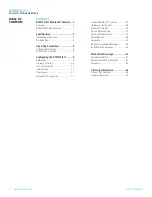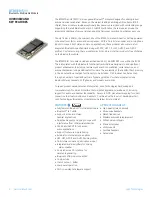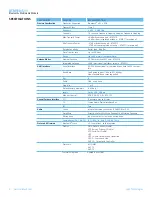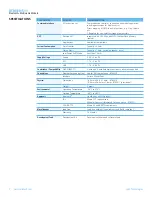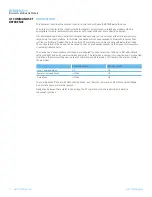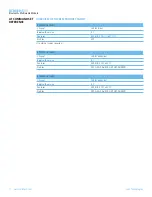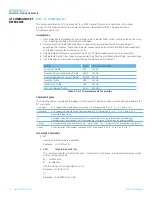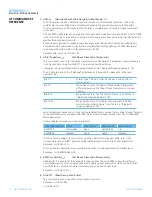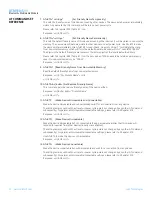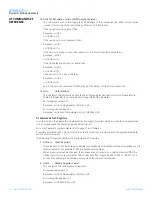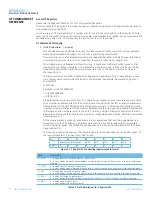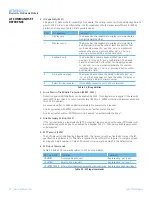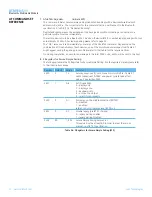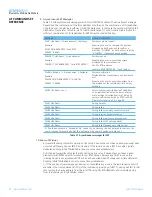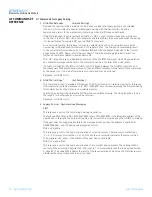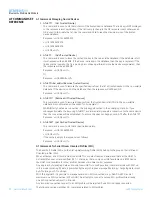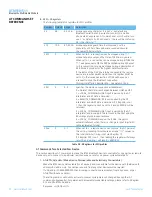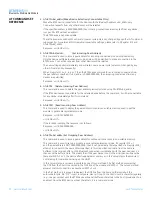
13
www.lairdtech.com
Laird Technologies
BTM510/511
Bluetooth
®
Multimedia Module
3. ATZ<n>
{Hardware Reset and Emerge Into Boot Mode ‘n’}
Forces the device through a hardware reset which means it will eventually come alive in the local
command and unconnected mode. This allows changes to the non-volatile memory to take effect.
The module will issue an OK response after the reset is complete and it is ready to receive commands
once again.
ATZ and ATZ0 signify reset and emerge into the current boot mode (see command ATI14). ATZ1 to ATZ4
instructs the module to reset and then emerge into the appropriate boot mode. Note that S Register 103
specifies the boot mode from cold.
Boot modes are required to configure some low level device settings which cannot be configured by
S registers and AT commands. Currently there are predefined settings defining the PCM data format
to be used with certain codec ICs (applies mainly to BC04).
Response after reset: <cr,lf>OK<cr,lf>
4. AT+BTC<devclass
hex
>
{Set Device Class Code Temporarily}
This command is used to set the device class code which will be sent in subsequent inquiry responses.
It can be read back using the AT+BTC? Command, as described below.
<devclass> is a six digit hexadecimal number derived as per “Bluetooth Assigned Numbers” [8].
The 24 bits are made of four fields briefly described as follows (bit 0 corresponds to the least
significant bit):-
Bits 0-1:
Format Type. This field currently only has a value of 00 (i.e.,
format type 1).
Bits 2-7:
Minor Device Class: The value of these six bits is interpreted
differently based on the Major Device Class stored in the next
five bits.
Bits 8-12:
Major Device Class: Five bits, refer to Figure 1 and Table 3 in
“Bluetooth Assigned Numbers” [8].
Bits 13-23:
Major Service Class: 11 bit field, used as a mask to define
service classes, refer to Figure 1 and Table 2 in “Bluetooth
Assigned Numbers” [8].
Laird Technologies devices do not map to any predefined Major Service Class or Major Device Class and
so the default devclass as shipped is 001F00, which means no Major Service Class and “Unclassified”
Major Device class.
Other examples of device class codes are follows:
Code (Hexadecimal)
Name
Major Service
Major Device
Minor Device
0x001F00
Unclassified
None
Unclassified
n/a
0x200404
Headset
Audio
Audio
Headset
There is a tool available in the Internet for creating a particular device class code: refer to [9].
A device class set by AT+BTC becomes visible immediately but will be lost on next power cycle.
Response: <cr,lf>OK<cr,lf>
Or for an invalid <devclass> value (usually a value which is not 6 hexadecimal characters long):
Response: <cr,lf>ERROR 08<cr,lf>
5. ATS515=<devclass
hex
>
{Set Device Class Code Permanently}
S Register 515 is used to set the device class code permanently. Use AT&W to save the setting to
non-volatile memory. The new value will become visible on next power cycle which can be initiated
by ATZ. Refer to number 4 for more information about the device class code.
Response: <cr,lf>OK<cr,lf>
6. AT+BTC? {Read Device Class Code}
This command is used to read the current device class code.
Response: <cr,lf>123456
<cr,lf>OK<cr,lf>
AT COMMAND SET
REFERENCE


